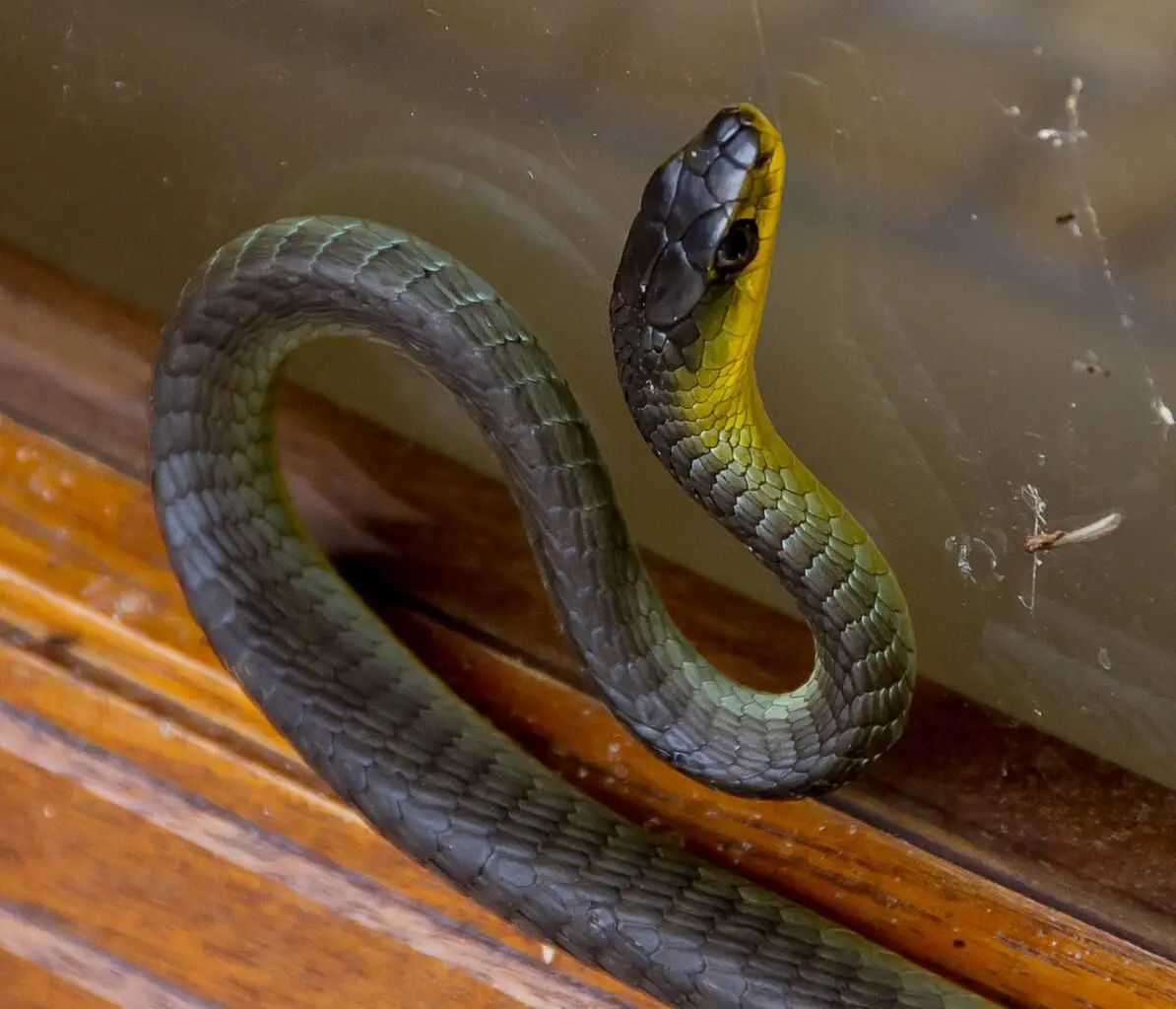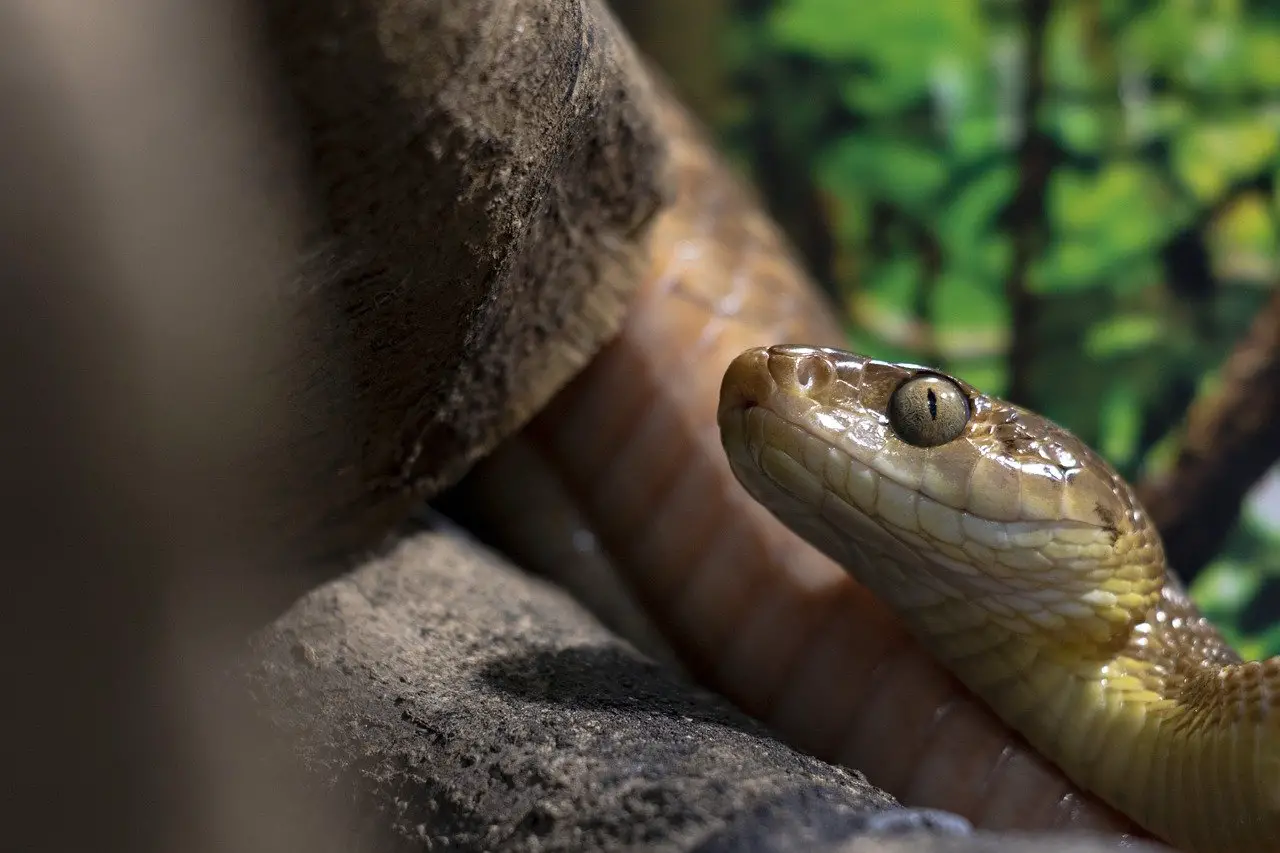The boomslang snake, scientifically known as Dispholidus typus, is a fascinating reptile found in Sub-Saharan Africa. With its striking appearance and potent venom, the boomslang snake has captured the interest of herpetologists and snake enthusiasts alike. In this article, we will explore the physical characteristics, distribution, behavior, venom, reproduction, and conservation status of the boomslang snake, shedding light on its intriguing nature.
You may also want to read about the 5 longest snakes.
1. Introduction
The boomslang snake, named for the Afrikaans word meaning “tree snake,” belongs to the Colubridae family. It is a highly venomous snake that inhabits various environments, including forests, woodlands, and savannas. Its ability to blend seamlessly with its surroundings and deliver potent venom makes it a formidable predator.

2. Overview of the Boomslang Snake
The boomslang snake is a relatively large species, with adult males reaching lengths of up to 1.8 meters (6 feet) and females slightly smaller at around 1.5 meters (5 feet). It has a slender body, allowing it to navigate through dense vegetation with ease. This agility, coupled with its keen eyesight, contributes to its exceptional hunting abilities.
3. Physical Characteristics
3.1 Size and Shape
The boomslang snake exhibits sexual dimorphism, with males being larger than females. Its long and slender body is an adaptation for its arboreal lifestyle, enabling it to move effortlessly through trees and bushes.
3.2 Coloration
One of the most striking features of the boomslang snake is its variable coloration. It can range from vibrant green, which aids in camouflage within the foliage, to brown or even black. This ability to change color helps the snake remain inconspicuous and avoid detection by potential threats or prey.
3.3 Head and Eyes
The boomslang snake has a distinctive head shape, featuring large eyes with round pupils. Its eyesight is exceptional, providing it with accurate depth perception, enabling it to strike with precision at its prey.
4. Distribution and Habitat
The boomslang snake is endemic to Sub-Saharan Africa, found in countries such as South Africa, Botswana, Mozambique, and Zimbabwe. It primarily inhabits regions with abundant trees and vegetation, as it spends the majority of its time in the treetops. This arboreal snake is well-adapted to forested areas and is seldom found in open grasslands.
5. Behavior and Diet
5.1 Hunting Strategies
The boomslang snake is an ambush predator, relying on stealth and patience to capture its prey. It positions itself on branches or in dense foliage, waiting for unsuspecting birds, reptiles, or small mammals to come within striking range. When the moment is right, it lunges forward with remarkable speed, sinking its fangs into its victim.
5.2 Diet and Prey
The diet of the boomslang snake primarily consists of birds and their eggs, although it also preys on lizards, chameleons, and occasionally small mammals. Its slender body allows it to maneuver through the treetops with precision, making it a formidable predator in the avian world.

6. Venom and Dangerousness
The boomslang snake possesses potent venom, making it a significant threat to both its prey and humans. Its venom is hemotoxic, meaning it affects the blood and can lead to various symptoms, including bleeding disorders. Despite its venomous nature, the boomslang snake is generally non-aggressive and avoids confrontation with humans. Bites are relatively rare but can be life-threatening if left untreated.
7. Reproduction and Lifespan
Boomslang snakes are oviparous, meaning they lay eggs rather than giving live birth. Females lay a clutch of 10 to 25 eggs in tree hollows or leaf litter, providing a safe environment for the eggs to incubate. After an incubation period of around 60 days, the hatchlings emerge fully independent.
The lifespan of boomslang snakes in the wild is not precisely known, but it is estimated to be around 8 to 12 years. However, in captivity, they have been known to live for over 20 years with proper care.
8. Conservation Status
The boomslang snake is currently listed as a species of least concern on the IUCN Red List of Threatened Species. However, its populations face certain challenges, including habitat destruction, deforestation, and illegal collection for the pet trade. Conservation efforts focused on preserving its natural habitat and raising awareness about the importance of coexisting with these remarkable creatures are crucial for their long-term survival.
9. Interaction with Humans
9.1 Bites and Medical Importance
While the boomslang snake’s venom is potent, it seldom poses a significant threat to humans. Due to its non-aggressive nature, it generally only bites when provoked or cornered. Nonetheless, if bitten, it is crucial to seek immediate medical attention. Anti-venom is available and can effectively counteract the effects of the boomslang’s venom if administered promptly.
9.2 Conservation Efforts
Many organizations and individuals are actively involved in conserving the boomslang snake and its habitat. By promoting education and awareness, conducting research, and supporting legislation to protect these snakes, conservationists strive to ensure their continued existence and ecological balance.
10. Conclusion
The boomslang snake exemplifies nature’s ability to create remarkable and unique species. With its vibrant coloration, agile movement, and potent venom, it commands attention and awe. While respecting its dangerous potential, we must also appreciate its ecological role and work towards coexistence, preserving its natural habitat and protecting this extraordinary creature for generations to come.
FAQs
Q1: Are boomslang snakes aggressive towards humans?
Boomslang snakes are generally non-aggressive and prefer to avoid human contact. They will only bite in self-defense when threatened or cornered.
Q2: How venomous is the boomslang snake?
The boomslang snake possesses potent venom, which can be life-threatening if left untreated. Prompt medical attention is essential if bitten.
Q3: Are boomslang snakes endangered?
Currently, boomslang snakes are not considered endangered. However, they face threats from habitat destruction and illegal collection for the pet trade.
Q4: Can the boomslang snake change its color?
Yes, the boomslang snake is known for its ability to change color. It can range from vibrant green to brown or black, adapting to its surroundings for effective camouflage.
Q5: Are boomslang snakes found outside of Africa?
No, boomslang snakes are endemic to Sub-Saharan Africa and are not found in any other part of the world.
